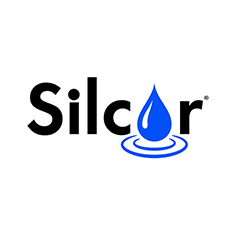In the current economic climate, construction products and materials must deliver long term performance as an absolute minimum. During the specification of below ground waterproofing systems, the ability to prevent water ingress is no longer enough as many structures are now being built to offer design life in excess of 100 years.
So what is the best form of defence? Leader in waterproofing technologies Grace Construction Products believes the solution lies in HDPE (high density polyethylene) geomembranes.
When specifying a geomembrane, there are a number of factors to consider that can place the membrane under stress. These include chemical, UV, mechanical and radioactive damage, all of which can deteriorate the membrane. With potential damage ranging from minor stress cracks to total flooding, the cost of failure can quickly become astronomical.
But the risk of failure can be reduced if a system is specified correctly, takes into account every element of the structure, its environment, and results from site evaluation to provide an integrated waterproofing solution. A HDPE geomembrane overcomes the threat of stress cracking, reductions in density, and impact resistance to deliver unrivalled long term performance.
The Hidden Depths of Geomembranes
A geomembrane is described by the Standard Terminology for Geosynthetics, ASTM D4439-00, as “An essentially impermeable membrane used as a liquid or vapour barrier with foundation, soil, rock, earth, or any other geotechnical engineering-related material as an integral part of a human-made project, structure, or system.”
In the relatively short history of geomembrane use as a barrier system for waste and liquid containment, there have been few case studies documenting its long term performance. However, the research that has been undertaken has shown that while much more investigation is required in this field, HDPE is at the forefront of geomembrane technology.
HDPE consists of only carbon and hydrogen, and has a structure that protects against degradation – it has little branching, which lends itself to higher intermolecular forces, tensile strength and an ability to withstand higher temperatures.
As Koerner, Hsuan and Koerner found in 2005, in unexposed conditions, HDPE has a half-life of 446 years at 20°C. This is in contrast to LLDPE (linear low density polyethylene), PVC (polyvinyl chloride), EPDM (ethylene propylene) and CSPE (chlorosulphonated polyethylene), which all revealed higher levels of degradation. This is due to the difference in their polymer structures – LLDPE, PVC and EPDM are at particular risk of oxidation, while CSPE suffers from dehydrochlorination.
Koerner, Hsuan and Koerner also found that while HDPE can be affected by temperature, in laboratory exposed conditions, the geomembrane has a half-life of at least 36 years in a dry and arid climate, superseding all its competitors – especially the North American PVC, which is known for several field failures and managed only a half-life of 18 years in this study.
A number of studies have investigated the vulnerability of HDPE to stress cracking, including Peggs and Carlson (1989), Rowe et al (1998) and Hsuan (1999). They found that cracks mostly appeared at points of discontinuity, which are naturally under stress, such as overlapping seams, patches and scratches. However, their research suggests that HDPE is otherwise exceptionally hardy, a point reinforced by Brady et al’s 1994 examination of HDPE behaviour in different environments. Here, new and 30 year old specimens of HDPE were found to show no substantial changes in density, water adsorption and tensile properties, while the impact resistance changed only after 15.5 years.
As Rowe and Sangam’s 2001 meta-analysis discovered, when unexposed to oxidation or chemical attack, HDPE can last for centuries with an unrivalled durability, which demonstrates its suitability for long-life specifications. HDPE offers the balance of performance for mechanical strength, chemical resistance and cost.
However, if HDPE does have a weakness – it is an inability to perform as an effective hydrocarbon resistant barrier due to its own hydrocarbon structure. Grace Construction Products, a company that has been leading the waterproofing market for more than 30 years, presents a solution – Preprufe®. Incorporating a multilayer structure, which combines HDPE with synergistic adhesive layers and a microporous surface layer, no other system on the market can protect a substructure from the harmful effects of water and vapour, better than Preprufe®.
Waterproofing with Grace
Preprufe®, which incorporates Advanced Bond Technology, consists of layers of HDPE film, synthetic adhesives and a weather resistant coating, providing an impermeable barrier, through which water, salt and sulphates cannot pass. Unlike other membrane systems, the Preprufe® waterproofing membrane does not rely upon hydration processes or swell in contact with water, and can withstand a 70m head of water, therefore Preprufe® is truly waterproof. It remains sealed to the structure, regardless of the ground settling, and is lightweight, flexible and versatile.
It can also be applied on wet concrete and is immediately ready without protective layers to receive rebar installation, proving to be a faster and simpler application than many other waterproof membranes. Preprufe® is actually more than five times faster to install than a traditional loose-laid PVC system.
Preprufe® has been used at high-profile, challenging and widely varying projects across the world, such as the Vodafone Headquarters in Milan, Casablanca’s Morocco Mall and the Canary Wharf Crossrail station in London – demonstrating the versatility and effectiveness of a waterproofing system that incorporates a HDPE geomembrane.
The success of construction projects that have used Preprufe® perfectly demonstrates the importance of specifying a geomembrane that is fit for purpose, economically and environmentally sustainable and delivers waterproofing performance like no other system on the market.
View Preprufe System Product Entry







